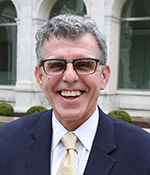September 2016

David Gozal, MD, MBA
To paraphrase the authors of the paper “Clinical Excellence in Academia: Perspectives from Masterful Clinicians – Mayo Clinic Proceedings” (2008): The clinically excellent academic physician (CEAP) has reached a recognizably superlative level of mastery in communication and interpersonal skills, and in his/her ability to negotiate the health care systems in which they operate. Such physicians are exemplary with respect to professionalism and humanism, and their diagnostic acumen, knowledge, and scholarly approach to clinical practice. The CEAP is passionate about patient care and serves as an explicit model for medical trainees and colleagues.
We all aspire to provide this level of care, and over the many years that I have been fortunate to attend the International Conference, it is clearly apparent that many ATS members have reached such unique distinction. This is not only obvious from the caliber nominees considered each year for awards such as the Outstanding Clinician Award, the Elizabeth A. Rich, MD Award, the Ziskind Clinical Research Scholar Award, and many other distinguished recognitions; it is also evident from the myriad of interactions taking place in the halls and meeting rooms, by the posters, or while grabbing a quick coffee or sandwich. So why am I bringing this topic to the September President’s Message?
It should come as no surprise that substantial disparities exist in our access to health care. For example, a multiplicity of factors, rather than availability of insurance alone, accounts for major differences in the outcomes and care delivered to patients with an acute critical illness (1). Similarly, among insured children with asthma, a variety of factors leads to huge discrepancies in their care and disease control (2).
This observation is not restricted to only these two conditions. It is apparent for patients requiring care for any respiratory, critical care, or sleep disorder—at any age, and in every region. One of our mandates as a Society is not only to promote the discovery of novel mechanisms of disease and treatment for all conditions represented in our three pillars, but also to raise the standards of care to the levels achieved by CEAPs.
We can always blame the health care system. We can always criticize the political system, find this X or that Y problem. But even extensive health care reform does not necessarily change the pattern or quality of care we deliver (3).
As a professional association, our advocacy efforts in the ATS diligently aim to represent our mission and achieve better respiratory health for all patients. Thanks to the dedication of engaged members and leaders, and countless volunteers contributing on committees and task forces, we bring important messages to the executive and legislative branches of our government. In many ways, we are effectors of change.
However being a CEAP is a personal journey into excellence, independent of any designated structure or system. The more CEAPs there are among us in the ATS, the better our profession will fare—and so too our patients.
How and what can the ATS do to assist your journey to clinical excellence? I would appreciate your input and ideas.
- Soto GJ, Martin GS, Gong MN. Healthcare disparities in critical illness. Crit Care Med. 2013 Dec;41(12):2784-93.
- Sarpong EM, Miller GE. Racial and ethnic differences in childhood asthma treatment in the United States. Health Serv Res. 2013 Dec;48(6 Pt 1):2014-36.
- Hanchate AD, McCormick D, Lasser KE, Feng C, Manze MG, Kressin NR. Impact of Massachusetts health reform on inpatient care use: Was the safety-net experience different than in the non-safety-net? Health Serv Res. 2016 Aug 8. doi:10.1111/1475-6773.12542. [Epub ahead of print] PubMed PMID: 27500666.

